Among the many exhibitions presented in 2010, this one from cityLAB really stuck with us. "WPA 2.0, Working Public Architecture," asks fundamental questions of our government’s wisdom in funding infrastructure. All winners in this competition think up solutions that reveal just how bold and forward-leaning the leaps in our thinking will need to be to meet the immense challenges we face in the years to come. Founders of cityLAB, Dana Cuff and Roger Sherman, have always brought us thoughtful work, but the videos of these winning entries is a real eye-opener. See below for descriptions of the winning projects and links to the videos.
The following comes to us from Linda C. Samuels, Senior Research Associate, cityLAB
While our urban infrastructure is fast decaying and our economy struggling on tenuous territory, government investment, growing interest in all things green, and a need to stretch limited funds for maximum public benefit have meant creative solutions are necessary for the next generation of public works -- what we at UCLA's cityLAB are calling WPA 2.0, Working Public Architecture. Initiated in 2009 and emerging as a web-based exhibition in 2010, the results of the WPA 2.0 and WPA 2.0 (SE) competitions -- professional and student versions respectively -- now make up a design research database of over 300 entries authored by nearly 800 individuals representing 27 U.S. states and 23 countries. These projects, we concluded, exhibit four strategies utilized by designers in the creation of next generation public works: reinvent (completely new forms of infrastructure), recycle (new purposes for obsolete facilities), revitalize (hybridizing infrastructure with multiple purposes), and restructure (strategically reconfiguring the city to increase productivity). As crisis turns more steadily towards opportunity in the year and years to come, architects, urban designers, landscape architects, and planners can draw upon such strategies and the projective models they come from to champion the broader thinking necessary to design and build the next generation city.
WPA 2.0 WINNER:
CARBON T.A.P. // TUNNEL ALGAE PARK
PORT Architecture + Urbanism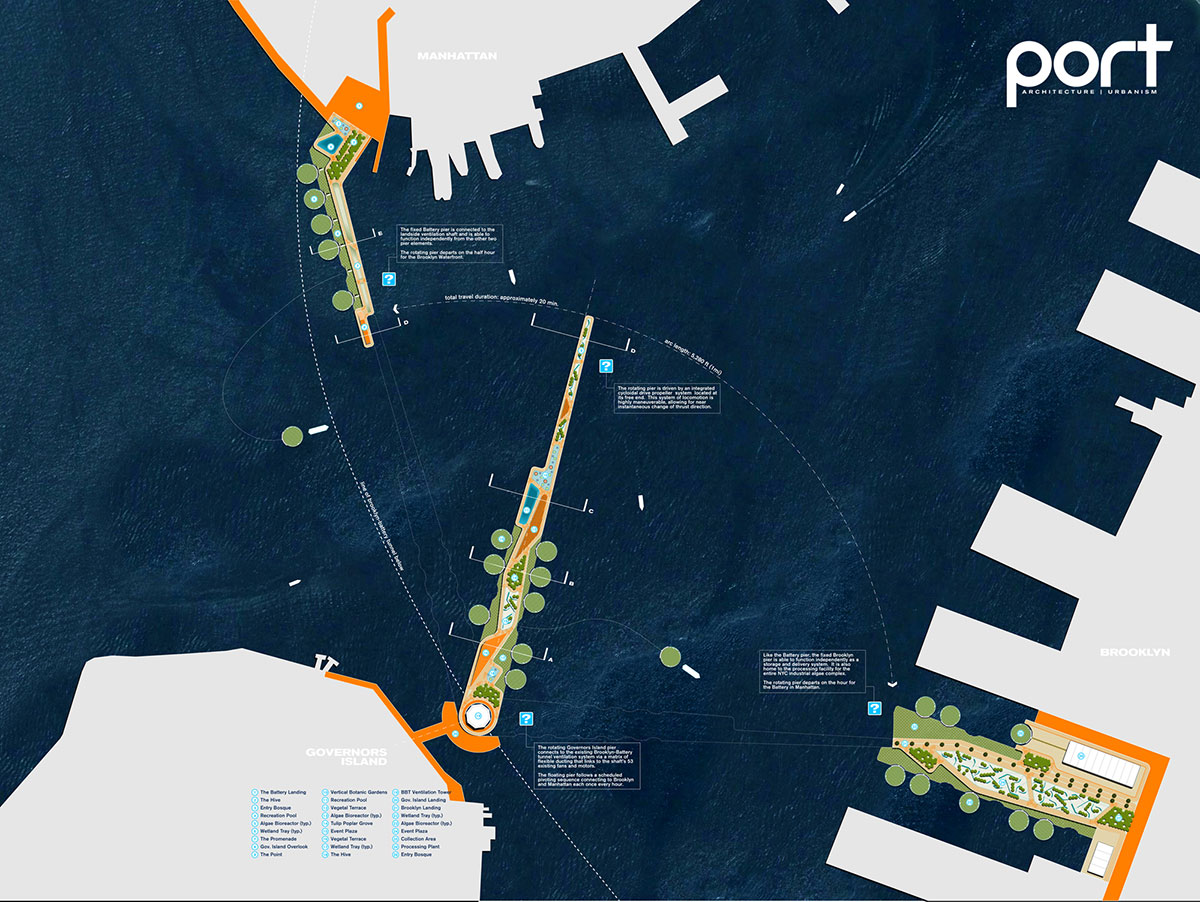 Part bridge, part recreation space, part bio-fuel production, Carbon T.A.P. takes the normally undesirable carbon-dioxide exhaust from vehicles and uses it as the instigator for new, active, productive, and beautiful public spaces. Sited above the Brooklyn-Battery Tunnel in New York, the project deploys pivoting piers that combine pontoon-based, carbon-generated algae farming and biofuel production with wildlife habitats, recreation amenities, high-speed bicycle lanes and public promenades.
Part bridge, part recreation space, part bio-fuel production, Carbon T.A.P. takes the normally undesirable carbon-dioxide exhaust from vehicles and uses it as the instigator for new, active, productive, and beautiful public spaces. Sited above the Brooklyn-Battery Tunnel in New York, the project deploys pivoting piers that combine pontoon-based, carbon-generated algae farming and biofuel production with wildlife habitats, recreation amenities, high-speed bicycle lanes and public promenades.
FINALISTS:
HYDRO-GENIC CITY 2020
aershop: Darina Zlateva, Takuma Ono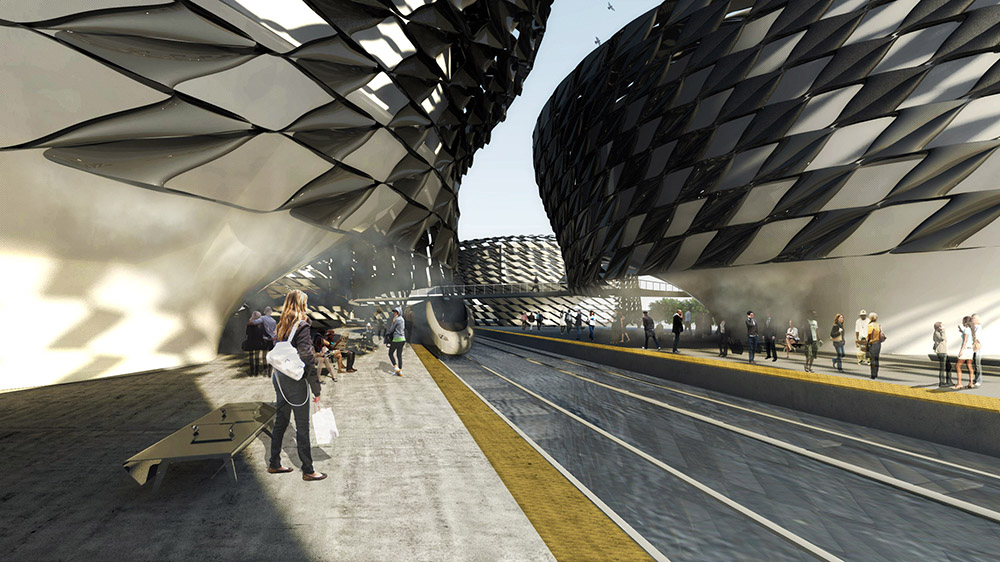 Hydro-Genic City 2020 transforms traditionally uninspiring water treatment facilities into hybrid urban nodes of water reclamation, recreation, energy production, and transit. Each reclamation center provides a sustainable water source to the city (this particular test case capitalizes on the currently under-utilized Los Angeles River channel) while mist platforms, solar-encased water tanks, urban beaches, aquatic parking lots and other water-based landscapes become organizational moments for community building.
Hydro-Genic City 2020 transforms traditionally uninspiring water treatment facilities into hybrid urban nodes of water reclamation, recreation, energy production, and transit. Each reclamation center provides a sustainable water source to the city (this particular test case capitalizes on the currently under-utilized Los Angeles River channel) while mist platforms, solar-encased water tanks, urban beaches, aquatic parking lots and other water-based landscapes become organizational moments for community building.
BORDER WALL AS INFRASTRUCTURE
Rael San Fratello Architects: Ronald Rael, Virginia San Fratello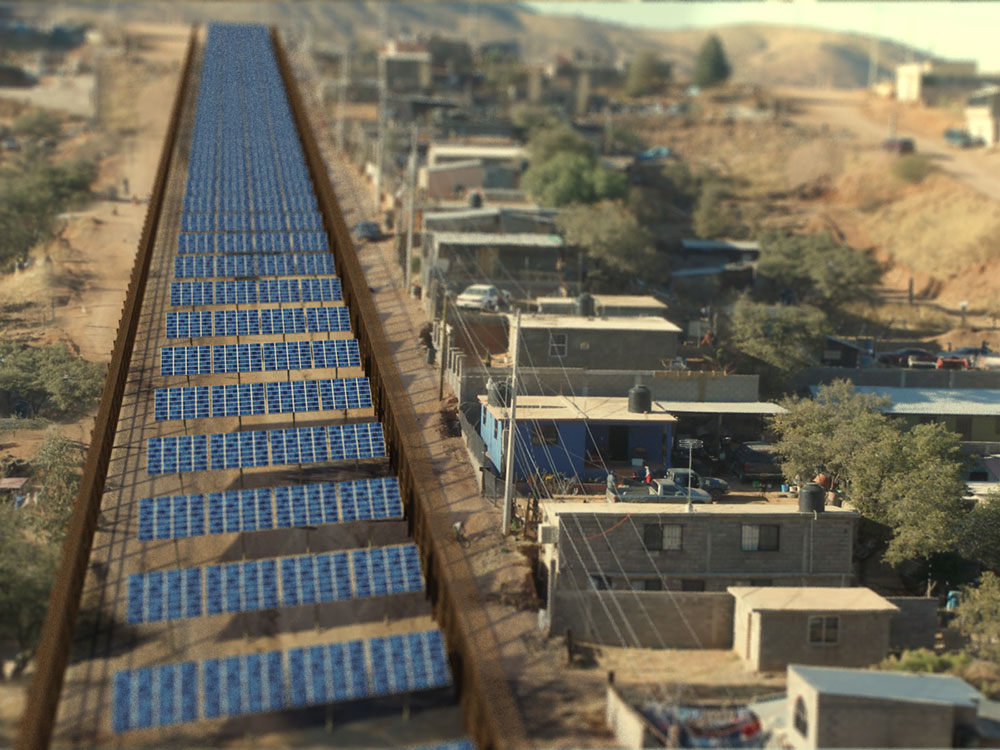 Border Wall reconsiders the most expensive infrastructural investment per mile in the US by proposing cross-programming the US-Mexico border to provide such useful public services as alternative energy production, water capture and distribution, bicycle and pedestrian transportation, and libraries. Banal security fencing would not only be enhanced with infrastructural amenities, it would also promote mutually-beneficial cross-border relationships.
Border Wall reconsiders the most expensive infrastructural investment per mile in the US by proposing cross-programming the US-Mexico border to provide such useful public services as alternative energy production, water capture and distribution, bicycle and pedestrian transportation, and libraries. Banal security fencing would not only be enhanced with infrastructural amenities, it would also promote mutually-beneficial cross-border relationships.
COUPLING INFRASTRUCTURES
Lateral Office: Mason White, Lola Sheppard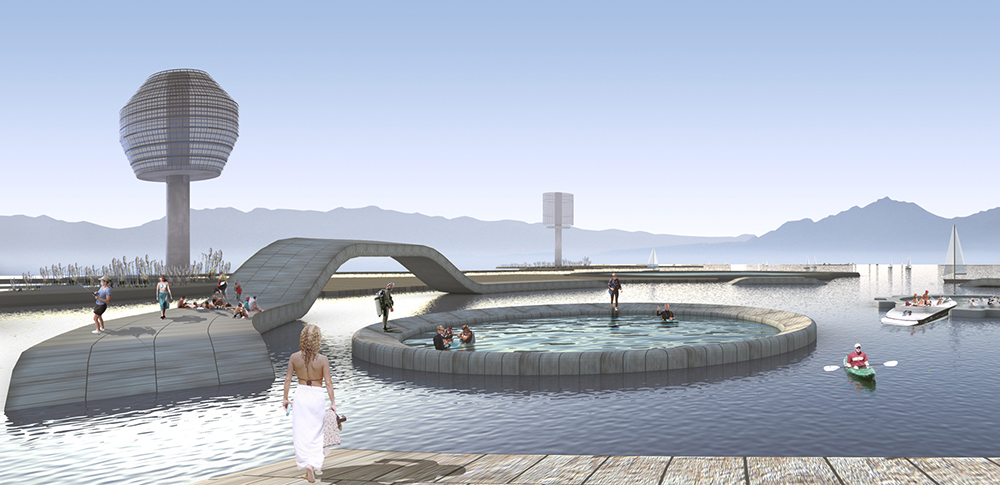 Coupling Infrastructure addresses America’s impending water-resource crisis while creating new economic opportunities and restoring the ecological balance of sites like California’s Salton Sea. In addition to sites for canoeing, swimming, and sailing, buoyant pools are variously equipped to attract migrating birds, passively separate water and salt, or grow aqua-crops, generating a new regional economy.
Coupling Infrastructure addresses America’s impending water-resource crisis while creating new economic opportunities and restoring the ecological balance of sites like California’s Salton Sea. In addition to sites for canoeing, swimming, and sailing, buoyant pools are variously equipped to attract migrating birds, passively separate water and salt, or grow aqua-crops, generating a new regional economy.
LOCAL CODE: REAL ESTATES
Nicholas de Monchaux & collaborators Local Code: Real Estates uses geospatial analysis to map the numerous publicly-owned yet abandoned lots and rights-of-way plentiful in every major US city. Utilizing a combination of parametric design and citizen participation, these abandoned properties are reinvented as neighborhood-specific, environmentally active park spaces.
Local Code: Real Estates uses geospatial analysis to map the numerous publicly-owned yet abandoned lots and rights-of-way plentiful in every major US city. Utilizing a combination of parametric design and citizen participation, these abandoned properties are reinvented as neighborhood-specific, environmentally active park spaces.
FREE WATER DISTRICT
UrbanLab: Sarah Dunn, Martin Felsen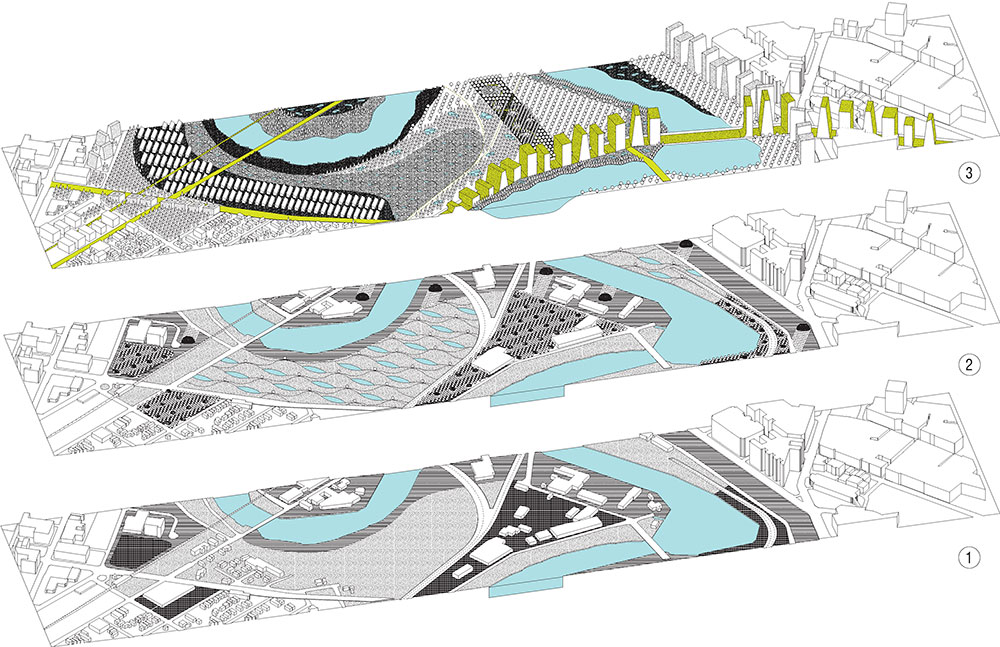 By pairing shrinking cities in the Midwest with drought-ridden cities of the arid Southwest, this proposal restructures supply and demand relationships at the national scale. Utilizing the Rust Belts’ decrease in population with its plenitude of fresh water, Free Water District outlines a strategy for re-densification of underutilized post-industrial landscapes by creating urban zones based on an abundance of free water.
By pairing shrinking cities in the Midwest with drought-ridden cities of the arid Southwest, this proposal restructures supply and demand relationships at the national scale. Utilizing the Rust Belts’ decrease in population with its plenitude of fresh water, Free Water District outlines a strategy for re-densification of underutilized post-industrial landscapes by creating urban zones based on an abundance of free water.
STUDENT CO-WINNERS:
R_IGNITE
Peter Millar, Andy Wilde, Jamie Potter, Stuart Wheeler
Re-Ignite is a socio-economic catalyst for the revision of ailing post-industrial port towns. This project revitalizes port cities by utilizing their now redundant industrial infrastructure as locations for the recycling of decommissioned ships and oilrigs. Here these industrial remnants are intertwined with social programs, incorporating ecology, energy production, skills development, education and leisure and along the way greening both the shipwrecking industry and port towns in need of revitalization.
AQUACULTURE CANAL_NEW ORLEANS
Fadi Masoud
Aquaculture Canal_New Orleans takes a dangerous and abandoned portion of the Industrial Canal where Lake Ponchartrain meets the Mississippi River and transforms it. Rather than shuttering the site (the current intentions of the Army Corps of Engineers), this proposal would recycle the Industrial Canal into a series of levee ponds that operate both as a flood protection mechanism from storm surges and a productive infrastructure for aquaculture.
ABOUT cityLAB
cityLAB, a think tank in UCLA’s Department of Architecture and Urban Design, was founded in 2006 by Dana Cuff and Roger Sherman. Its mandate is to bring together design and research to forge experimental proposals, both theoretical and applied, for architecture in the emerging metropolis. Four initiatives drive the lab’s efforts: rethinking green, the post-suburban city, urban sensing, and new infrastructures. For more information: www.cityLAB.aud.ucla.edu
